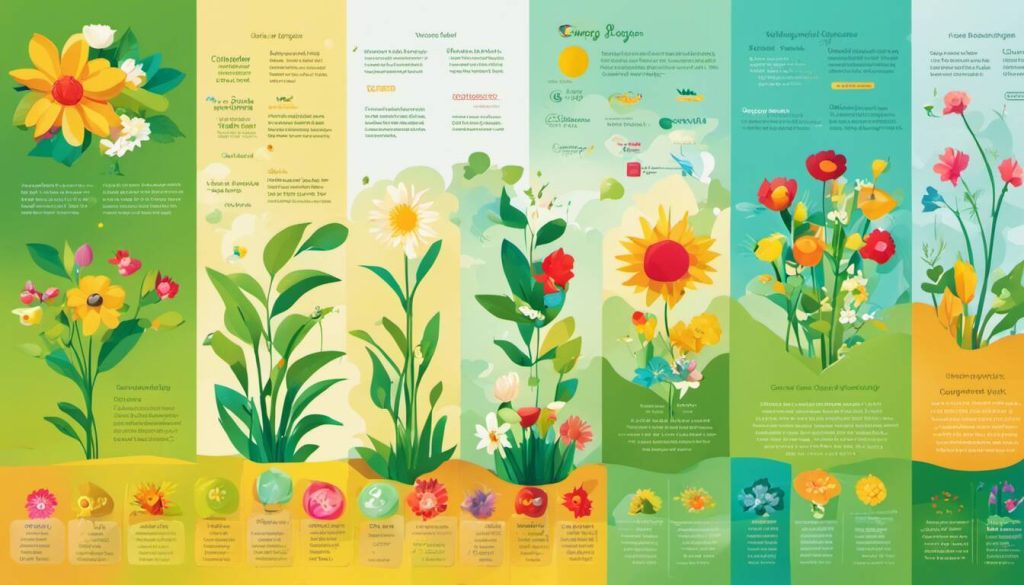Are you tired of watching your competitors steal the spotlight online while your website barely blinks on the visibility radar? The dark era of low web traffic ends today! Dive into our comprehensive guide on ‘Online Traffic Generation: Effective Strategies to Increase Website Visitors’. We’ll unlock the secrets of digital marketing, delivering actionable strategies that effectively attract a wave of online traffic. By illuminating SEO practices, social media campaigns, and content creation techniques, we provide you the keys to open the floodgates of web traffic. No smoke and mirrors — just proven strategies that work. Expect no less from Idaho’s leading SEO company! in 2023. Welcome aboard, let’s ride the wave of increased website visitors together!
There are various effective methods for generating online traffic, including search engine optimization (SEO), social media marketing, pay-per-click (PPC) advertising, content marketing, email marketing, and influencer marketing. The key is to develop a comprehensive, integrated strategy that leverages multiple channels and tactics to reach your target audience and drive high-quality traffic to your website. By focusing on audience needs and interests, providing value through engaging content and thoughtful engagement, you can build long-term success in driving targeted traffic to your website.

Effective SEO Techniques for Traffic Generation
In today’s highly competitive online landscape, implementing effective SEO techniques is crucial to drive traffic to your website. A well-executed SEO strategy can significantly increase your website’s visibility on search engine result pages (SERPs) and attract organic traffic from potential customers. Let’s explore some proven tactics that can help you generate online traffic and boost your website visitors.
First and foremost, keyword research plays a vital role in SEO. By identifying the right keywords that are relevant to your business and have a significant search volume, you can optimize your website’s content to align with what users are searching for. This helps search engines understand the purpose and relevance of your website, ultimately improving your SERP rankings.
When conducting keyword research, it’s essential to consider both short-tail and long-tail keywords. Short-tail keywords are typically shorter phrases with high search volumes but also high competition. Long-tail keywords, on the other hand, are longer and more specific phrases that target niche audiences with lower competition. Combining these two types of keywords can give you a well-rounded approach to driving targeted traffic.
For example, let’s say you run a pet grooming business in Boise, Idaho. While “pet grooming” may be a popular short-tail keyword, targeting “best dog groomer in Boise” or “affordable cat grooming in Idaho” could help you attract local customers who are actively looking for your services. In this way, understanding user intent when conducting keyword research is key to driving qualified traffic.
Apart from keyword optimization, another crucial aspect of SEO is creating high-quality and engaging content. Gone are the days when stuffing keywords into web pages would suffice; search engines now prioritize user experience and value-added content. By consistently producing informative articles, blog posts, videos, or other forms of content related to your industry or niche, you can establish yourself as a trusted authority and attract visitors who are genuinely interested in what you have to offer.
Now that we’ve covered the importance of SEO techniques for traffic generation, let’s dive deeper into one critical aspect of SEO – the keyword optimization strategy.
Keyword Optimization Strategy
Keyword optimization is an essential component of any effective SEO strategy. It involves strategically incorporating relevant keywords into various elements of your website, such as page titles, meta descriptions, headings, and body text, to signal search engines about your content’s relevance to users’ search queries.
When implementing a keyword optimization strategy, it’s crucial to strike a balance between optimizing your content for search engines and making it readable and engaging for your human visitors. Search engines use complex algorithms to determine relevancy and rank web pages accordingly. However, remember that ultimately, it is the users who will be reading and interacting with your content.
Consider this analogy: Imagine you’re attending a dinner party where the host keeps repeating their name every few seconds. It may become annoying and detract from the overall experience. Similarly, overstuffing your content with keywords can negatively impact user experience and make it appear less credible or trustworthy.
To optimize your content effectively, start by identifying primary keywords that accurately represent the main topic or theme of each page. Then incorporate these keywords naturally into your content while maintaining readability and flow. Aim for a keyword density that feels natural rather than forced. Additionally, make use of related terms or synonyms to further enhance the depth and relevance of your content.
At the same time, don’t forget about optimizing other important on-page elements. Craft compelling meta tags (title tags and meta descriptions) that entice users to click on your website in the search results. Use headers (H1, H2, etc.) to structure your content effectively and improve readability.
By implementing a well-thought-out keyword optimization strategy, you not only improve your website’s visibility in search engines but also create a user-friendly experience that encourages visitors to explore further. However, effective SEO encompasses more than just keywords and optimization tactics – it requires a holistic approach that incorporates various strategies and techniques.
Quality Backlink Creation
When it comes to increasing website traffic, one crucial strategy that should not be overlooked is quality backlink creation. Backlinks are links from other websites that direct users to your site. They not only drive traffic directly but also play a significant role in search engine optimization (SEO) by indicating the credibility and relevance of your content. However, not all backlinks are created equal. It’s important to focus on creating high-quality backlinks that have a genuine and relevant connection to your website.
So, how can you go about creating quality backlinks? One effective method is through guest blogging or contributorship. By writing insightful and valuable articles for reputable websites in your industry, you can gain exposure to a wider audience while earning backlinks to your own site. This establishes your authority in the field and increases the likelihood of attracting more organic traffic.
Let’s say you run a fitness blog, and you approach a well-known health and wellness website to contribute an article about the benefits of regular exercise. If approved, you would include a link within your guest post back to your own fitness blog. When readers find value in your content, they may click on the link to learn more about what you have to offer, thus driving traffic to your site.
Another strategy is reaching out to influencers or industry experts in your niche and asking them to feature your content on their platforms. This can be through mentions in their blog posts, featuring you as a guest on their podcast, or sharing your content on their social media channels. When these influencers endorse or promote your brand, it not only generates valuable backlinks but also exposes your website to their loyal followers and fans.
While quality backlink creation is crucial for boosting website traffic, leveraging social media can be equally as powerful.
Leveraging Social Media for Website Traffic
Social media platforms have revolutionized the way we connect and communicate with one another, making them an ideal tool for driving website traffic. By leveraging social media effectively, you can reach a wider audience, engage with potential customers, and ultimately increase traffic to your website.
One key strategy is to create compelling content that is shareable on social media platforms. This could be in the form of informative articles, engaging videos, or captivating images. The more valuable and share-worthy your content is, the more likely it is to be shared by your followers, expanding your reach and driving traffic back to your website.
For instance, let’s say you operate an online bakery and have recently developed a recipe for vegan chocolate chip cookies. You could create a visually appealing video highlighting the process of making these delicious treats. When you share this video on social media platforms like Facebook or Instagram, it has the potential to go viral as users tag their friends or family who might be interested in vegan baking. As a result, more people become aware of your bakery and visit your website to explore other offerings.
Think of social media platforms as a virtual megaphone that amplifies your brand voice. The more engaging and relevant your content is, the louder your message resonates with your target audience.
In addition to creating captivating content, actively engaging with your audience on social media can also drive traffic to your website. Responding promptly to comments and messages shows that you value and appreciate your followers’ input and encourages them to interact further. It’s important to provide informative and helpful responses that build trust and establish you as an authority within your industry.
Quality backlink creation and leveraging social media are just two effective strategies for increasing website traffic. However, it’s crucial to remember that driving consistent traffic requires the use of engaging content creation techniques.
- According to a 2021 report on Adobe Analytics data, organic search accounts for around 53% of all website traffic.
- A recent survey by the Content Marketing Institute revealed that 61% of marketers say improving SEO and growing their organic presence is their top inbound marketing priority.
- HubSpot’s State of Inbound report notes that companies are three times more likely to see higher ROI on inbound marketing campaigns than on outbound campaigns, which underlines the significance of online traffic generation strategies like content marketing and SEO.
Engaging Content Creation
When it comes to online traffic generation, creating engaging content is a vital strategy. Quality content not only attracts visitors to your website but also keeps them coming back for more. So, what makes content engaging?
First and foremost, compelling content addresses the needs and interests of your target audience. It provides valuable information, answers their questions, and solves their problems. By understanding your audience and conducting thorough research, you can tailor your content to resonate with their preferences.
Furthermore, engaging content is presented in an appealing and easily digestible format. This includes using eye-catching visuals, such as images and videos, to enhance the reader’s experience. Incorporating storytelling techniques can also help create an emotional connection with your audience and make the content more relatable.
Additionally, utilizing various types of content can further enhance engagement. For instance, blog posts, infographics, podcasts, and interactive quizzes all offer different ways for users to interact with your website. By diversifying your content format, you cater to different learning styles and keep your audience engaged.
Let’s consider an example of a fitness website that aims to increase traffic by creating engaging content. They could create a series of informative blog posts on topics like healthy eating habits or workout routines. They could also produce short exercise videos or offer downloadable meal plans.
To ensure maximum engagement, it’s essential to optimize your content for search engines. Conduct keyword research to identify relevant keywords that align with your target audience’s search queries. Incorporate these keywords strategically within your content while maintaining a natural flow.
Now that we understand the importance of engaging content creation let’s move on to another effective strategy for increasing website visitors: the effective use of social media ads.
Effective Use of Social Media Ads
In today’s digital landscape, social media has become an integral part of people’s lives. Therefore, leveraging social media ads can be an effective way to drive targeted traffic to your website. So, how can you make the most of social media ads?
First, it’s crucial to identify the social media platforms that align with your target audience. Facebook, Instagram, Twitter, and LinkedIn each have their unique user demographics and characteristics. By understanding your audience’s preferences and behavior, you can select the most appropriate platform(s) to focus your advertising efforts on.
Once you’ve chosen the platform(s), it’s time to create compelling ad content. Your ads should not only grab attention but also clearly communicate the value proposition of your products or services. Utilize catchy headlines, engaging visuals or videos, and persuasive language to entice users to click through to your website.
Some businesses find success by using storytelling techniques in their social media ads. For example, let’s say you run a travel agency. Instead of simply promoting discounted vacation packages, you could share captivating stories from customers who had unforgettable experiences while traveling. This approach allows potential customers to envision themselves in similar situations and increases the likelihood of them clicking on your ad.
Furthermore, utilizing targeting options offered by social media platforms is essential for reaching your desired audience. Narrow down your target audience based on factors such as age, gender, location, interests, and behaviors. This helps ensure that your ads are shown to people who are most likely to be interested in what you have to offer.
Lastly, regularly monitor and analyze the performance of your social media ads. Track key metrics such as click-through rates (CTR), conversion rates, and return on ad spend (ROAS). This data will help you optimize your ads over time and refine your targeting strategies for better results.
Now that we’ve explored the effective use of social media ads as a traffic generation strategy let’s move on to another method: paid advertising for a traffic boost.
Utilization of Paid Advertising for Traffic Boost
In the world of online traffic generation, one effective strategy to quickly boost your website visitors is through paid advertising. While organic search engine optimization (SEO) is important for long-term success, paid advertising can provide an immediate influx of targeted traffic to your website.
Paid advertising allows businesses to place their ads in front of potential customers who are actively searching for products or services related to their industry. It offers a way to reach a broader audience beyond just relying on organic search results. With the right approach, paid advertising can drive high-quality traffic that is more likely to convert into leads or sales.
When utilizing paid advertising, one key platform that stands out is Google AdWords. This powerful advertising platform allows businesses to create ads that appear on Google’s search engine results pages (SERPs), as well as on relevant websites within the Google Display Network.
For instance, let’s say you own a bakery business and want to increase your online visibility. By setting up an ad campaign on Google AdWords, you can target keywords like “best bakery in ” or “freshly baked goods,” ensuring that your bakery appears at the top of the search results when potential customers are looking for these terms.
To make the most of your investment in paid advertising, it’s important to optimize your Google AdWords campaigns effectively.
Optimizing Google AdWords Campaigns
Creating a successful Google AdWords campaign involves careful planning and continuous optimization. Here are some key strategies for optimizing your campaigns:
-
Keyword Research: Thoroughly research and select relevant keywords that align with your business and target audience. It’s essential to choose keywords that have sufficient search volume but aren’t overly competitive. Consider using tools like the Google Keyword Planner or other third-party keyword research tools for insights.
-
Compelling Ad Copy: Craft compelling ad copy that grabs attention and entices users to click. Highlight your unique selling points, promotions, or any other factors that differentiate your business from competitors. Use ad extensions to provide additional information or features.
-
Landing Page Optimization: Ensure that the landing page users are directed to is highly relevant to the ad they clicked on. Optimize the landing page for user experience and include a clear call-to-action (CTA) that encourages conversions.
-
Ad Testing and Optimization: Continuously test different ad variations, including headlines, copy, and visuals, to identify what resonates best with your audience. Monitor performance metrics like click-through rates (CTR), conversion rates, and cost per click (CPC). Utilize these insights to optimize your campaigns further.
-
Targeting Options: Take advantage of Google AdWords’ targeting options to reach your desired audience effectively. Consider demographic targeting, device targeting, location targeting, or even remarketing campaigns to re-engage visitors who have previously shown interest in your website.
By utilizing these strategies and continuously monitoring and optimizing your Google AdWords campaigns, you can maximize the effectiveness of your paid advertising efforts and drive valuable traffic to your website.
Website Optimization Practices for Attracting Visitors
When it comes to increasing website traffic and attracting more visitors, implementing effective website optimization practices is crucial. By optimizing your website, you can improve its visibility on search engines and provide a better user experience. Let’s explore some key practices you can implement to attract more visitors to your website.
First and foremost, keyword research plays a vital role in optimizing your website for search engine visibility. Conduct thorough research to identify relevant keywords that your target audience is using when searching for products or services related to your business. Incorporate these keywords naturally throughout your website’s content, including in titles, headings, meta descriptions, and image alt tags.
For instance, if you have an online clothing store specializing in sustainable fashion, targeting keywords like “sustainable clothing,” “eco-friendly fashion,” or “ethical apparel” could help attract visitors who are specifically looking for these types of products.
On-page optimization is another critical aspect of website optimization. This includes optimizing the structure and content of individual pages on your website. Ensure that each page has a unique and descriptive title tag, a well-crafted meta description that accurately summarizes the content, and relevant headings using appropriate HTML tags (H1, H2, etc.).
Furthermore, optimize the content itself by making it informative, engaging, and easy to read. Use bullet points, subheadings, and visuals such as images or videos to break up the text and make it more visually appealing. Incorporate internal links within your content to guide visitors to other relevant pages on your website.
In addition to on-page optimization techniques, website speed and performance are also important factors that can impact visitor engagement. A slow-loading website can be frustrating for users and may lead them to leave before fully exploring your site. Make sure to optimize your website’s loading speed by minimizing unnecessary plugins or scripts, compressing image files, and utilizing caching techniques.
Think of website optimization like preparing a delicious meal for your guests. Just like you carefully select the freshest ingredients, season them perfectly, and present the dish beautifully, optimizing your website ensures it is attractive, accessible, and provides a delightful user experience that keeps visitors coming back for more.
Another crucial aspect to consider is mobile optimization. With the increasing use of smartphones and tablets for browsing the internet, having a mobile-friendly website is essential. Make sure your website is responsive and adapts well to different screen sizes. Test its mobile-friendliness using tools like Google’s Mobile-Friendly Test, and make necessary adjustments to enhance the user experience on mobile devices.
Some may argue that focusing solely on website optimization neglects the importance of external factors in attracting visitors. While it’s true that external promotion plays a significant role, optimizing your website serves as a solid foundation for any marketing efforts. Without a properly optimized website, you may not be able to fully capitalize on traffic generated through external channels.
To conclude, implementing effective website optimization practices is essential for attracting visitors to your website. By conducting thorough keyword research, optimizing your content and pages, ensuring speedy performance, and prioritizing mobile-friendliness, you can create an inviting online presence that attracts and engages visitors. Remember that ongoing monitoring and continuous improvement are key to maintaining and enhancing your website’s performance over time.




